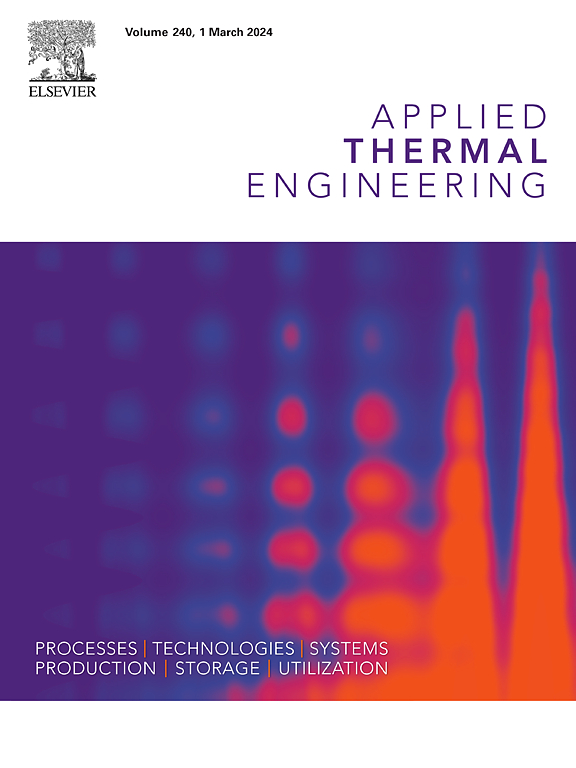Effect of working fluid charging amount on system performance in an ocean thermal energy conversion system
IF 6.9
2区 工程技术
Q2 ENERGY & FUELS
引用次数: 0
Abstract
In ocean thermal energy conversion (OTEC) systems, the initial working fluid charging amount is crucial as it relates to the system’s performance and economic cost. But currently, there is no clear standard for it, and as the working fluid circulating pump is the most direct and only means to regulate the working fluid flow, it is necessary to investigate the coupled effects of it and the working fluid charging amount on the system performance. To this issue, a corresponding experimental facility was established. The coupled effects were investigated by energy and exergy analysis under varying temperature difference. The results showed that varying working fluid charging amount changed the physical state of the working fluid, and the effect on the system varied under dissimilar temperature difference conditions. Compared to the standard charge (8 kg), 75 % of the standard charging amount diminished the system thermal efficiency by 17 % and exergy efficiency by 16 % at small temperature difference (20 °C), whereas a charging amount of more than 100 % resulted in improved thermal efficiency by 14 % and exergy efficiency by 13 %. At large temperature difference (28 °C), 75 %, 125 % and 150 % of the standard working fluid charging amount all improved system performance (thermal efficiency by maximum 16 %, exergy efficiency by maximum 21 %). Besides, an increase in circulating pump frequency improved system performance regardless of the temperature difference and working fluid charging amount. This research innovatively investigates the above problems in the application scenario of OTEC, and provides theoretical and data support for the development of OTEC technology.
海洋热能转换系统中工作液充注量对系统性能的影响
在海洋热能转换(OTEC)系统中,初始工作液充注量对系统性能和经济成本至关重要。但目前还没有明确的标准,而工作液循环泵是调节工作液流量最直接也是唯一的手段,因此有必要研究它与工作液充注量对系统性能的耦合影响。为此,我们建立了相应的实验设施。在温差变化的情况下,通过能量和放能分析对耦合效应进行了研究。结果表明,改变工作液充注量会改变工作液的物理状态,在不同的温差条件下对系统的影响也不同。与标准充注量(8 千克)相比,在小温差条件下(20 °C),75% 的标准充注量会使系统热效率降低 17%,放能效率降低 16%,而超过 100%的充注量会使系统热效率提高 14%,放能效率提高 13%。在温差较大的情况下(28 °C),标准工作液充注量的 75 %、125 % 和 150 % 都能提高系统性能(热效率最高提高 16 %,能效最高提高 21 %)。此外,无论温差和工作液充注量如何,提高循环泵频率都能改善系统性能。该研究创新性地探讨了 OTEC 应用场景中的上述问题,为 OTEC 技术的发展提供了理论和数据支持。
本文章由计算机程序翻译,如有差异,请以英文原文为准。
求助全文
约1分钟内获得全文
求助全文
来源期刊

Applied Thermal Engineering
工程技术-工程:机械
CiteScore
11.30
自引率
15.60%
发文量
1474
审稿时长
57 days
期刊介绍:
Applied Thermal Engineering disseminates novel research related to the design, development and demonstration of components, devices, equipment, technologies and systems involving thermal processes for the production, storage, utilization and conservation of energy, with a focus on engineering application.
The journal publishes high-quality and high-impact Original Research Articles, Review Articles, Short Communications and Letters to the Editor on cutting-edge innovations in research, and recent advances or issues of interest to the thermal engineering community.
 求助内容:
求助内容: 应助结果提醒方式:
应助结果提醒方式:


